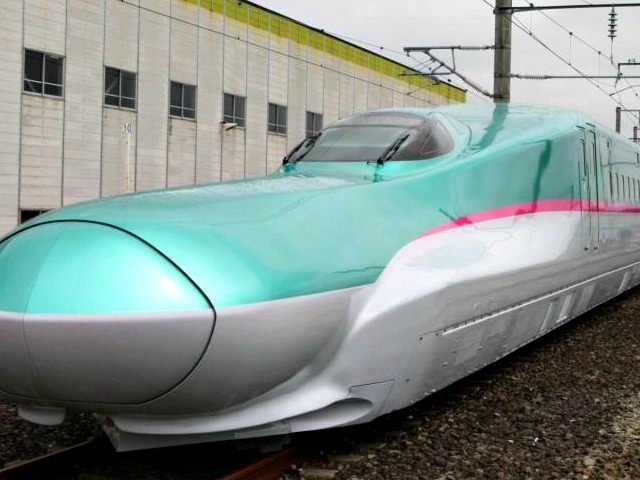The audaciousness of EIon Musk to challenge bone-headed establishment thinking is on maximum display this month as his SpaceX organization helps launch the design competition for a “sub-scale” Hyperloop prototype pod train.
Unlike the California High Speed Rail, that no sane person believes will be high speed or ever break-even, Hyperloop may revolutionize transportation by profitably whisking passengers and their cars at up to 800 miles per hour from Los Angeles to San Francisco in a half hour.
It all started with a white paper Musk released on August 12, 2013 describing his disruptive concept of high-speed ground transport. Unlike the phony economic analysis that Breitbart News had outed in California Goes Off The Rails With High Speed Train, Musk laid out a logical plan to use crowd-source collaboration to perfect the technology.
Two California-based start-up companies were formed. Hyperloop Technologies was quickly established with an $8.5 million initial and a follow-on $80 million venture funding. Another 2013 startup called Hyperloop Transportation Technologies has also crowdfunded and crowdsourced its way to a team of 170 mostly part-time engineers and designers are working on the project in a warehouse in downtown Los Angeles.
Although neither is officially affiliated with any Hyperloop companies, SpaceX and Musk are helping accelerate development of a functional prototype and to encourage student innovation. SpaceX is building a mile long Hyperloop four foot diameter sub-scale test track adjacent to its Hawthorne, California headquarters.
In keeping with its commitment to transparent technology development, SpaceX published the ‘Hyperloop Pod Competition’ as an open call for design and build proposals geared towards university students and independent engineering teams to develop the best Hyperloop pod. The timing of the competition schedule includes:
- 8/15/2015, release of detailed rules, criteria, and tube specifications;
- 9/15/2015, deadline for entrants to submit their Intent to Compete;
- 10/15/2015, deadline for entrants to submit Preliminary Design Briefing;
- 12/15/2015, last day for entrants to submit Final Design Package;
- 1/9/2016, SpaceX hosts entrant’s in-person design weekend Texas A&M University;
- 6/2016, competition weekend for pod competitors the SpaceX Hyperloop Test Track.
SpaceX, which has been developing the technology at its offices said they may build a demonstration pod, but will not be eligible to win the competition. The knowledge gained will become open-sourced “free-ware” to the public and even potential competitors.
USC professor Geoffrey Spedding told KQED that he is putting a team together from the universities’ aerospace and mechanical engineers that have changed the world by moving data around have the opportunity to start a new revolution moving physical mass around. He commented, “Hyperloops and unmanned air vehicles and all kinds of things like that … will spur a whole new, exciting revolution.”
What got Musk to focus on the concept was his incredible “disappointment” with the plan to spend $95 billion to build the first 130 miles of the California High-Speed Rail. Musk said that the state’s expensive plan had more to do with politics than engineering.
Dirk Ahlborn, Hyperloop Transportation Technologies’ founder, says that his collaboration of experts and students has demonstrated there are no technical show-stoppers. He estimates a commercial Hyperloop traveling faster than a 737 could connect California’s two biggest cities within a decade for between $7 and $16 billion.
Even though Governor Jerry Brown and a gaggle of politicians and union officials held a high-profile January groundbreaking in Fresno, California’s High-Speed Rail project appears to be running 6 years behind schedule, having only purchased about a quarter of the land parcels necessary to build their first 29-mile stretch in the Central Valley.
Hopefully, Hyperloop’s privately crowdfunded and crowdsourced technologies will soon succeed, so that California’s Ministry of Transportation can be shut down to protect taxpayers from further boondoggle spending.

COMMENTS
Please let us know if you're having issues with commenting.